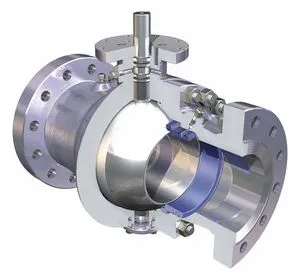The appearance of the
ball valve was in the 1950s. With the rapid development of science and technology, manufacturing processes and structures of ball valves have improved gradually.
Ball valves have rapidly developed into one of the main valves in a short period of 40 years. In China, the ball valve is widely used for petroleum refining, paper making, pharmaceutical, water conservancy, electric power, municipal, steel and other industries, and it plays a decisive role in the national economy.
Ten Notes for Maintaining Ball Valves
(1) We must make sure that pressure of upstream and downstream pipelines has been released before disassembling ball valves.
(2) When the
ball valve is disassembled or reassembled, we need to be very careful to prevent damage to the sealing surface of the part, especially the non-metallic part. Use special tools to remove the O-ring.
(3) The bolt on the flange must be screwed evenly, symmetrically and step by step when the
ball valve is assembled.
(4) Cleaning agents should not react with rubber parts, plastic parts, metal parts and working media of ball valves. When the working medium is gas, gasoline can be used for cleaning metal parts. Pure water or alcohol can be adopted for cleaning non-metallic parts.
(5) The individual disassembled part can be cleaned by immersion cleaning. Metal parts can be scrubbed by clean and fine silk which is socked with cleaning agents in order to avoid the falling fiber sticking to the part. Remove all the grease, dirt, gum deposit and dust which stick to the wall of the ball valve when cleaning.
(6) Non-metallic parts should be removed immediately after they are cleaned. They should not be socked with the cleaning agent for a long time.
(7) The
ball valve can be assembled after the cleaning agent of the wall's surface volatilizes (silk not socked with the cleaning agent can be used to wipe the wall's surface). However, the cleaned part can not be put aside for a long time. Otherwise, it will rust and be covered with dust.
(8) New parts need to be cleaned before they are assembled.
(9) Use grease to lubricate. Grease should not react with rubber parts, plastic parts, metal parts and working media of ball valves. If the working medium is gas, special 221 grease can be used for the ball valve. Apply a thin layer of grease over the surface of the sealing element's mounting groove, the surface of the rubber sealing element and the sealing surface and friction surface of the valve stem.
(10) Metal debris fibers, grease (except for the required grease), dust, foreign bodies and other impurities should not stick to or remain on the surface of the part or enter the cavity.
